In part one of this blog series, we introduced hybrid marketing as a method that combines both direct and digital marketing capabilities while absorbing insights from machine learning.
In part two, we will share perspectives on:
- How SAS Customer Intelligence 360 completes analytic's last mile.
- How campaign management processes can easily absorb algorithmic-defined segments and take action.
- Practitioner-oriented use cases for direct, email, web, and mobile marketing.
Let’s assume we're feeling confident about the results of our clustering analysis. Now's the time to share the results with the marketing teams who manage campaigns across touch points. The audience segments defined in SAS Customer Intelligence 360 can absorb the clusters to improve targeting criteria that can be used for direct, email, web, mobile, or other interaction types.
To begin the transition, the analyst simply needs to score customer (or prospect) records with cluster tags.
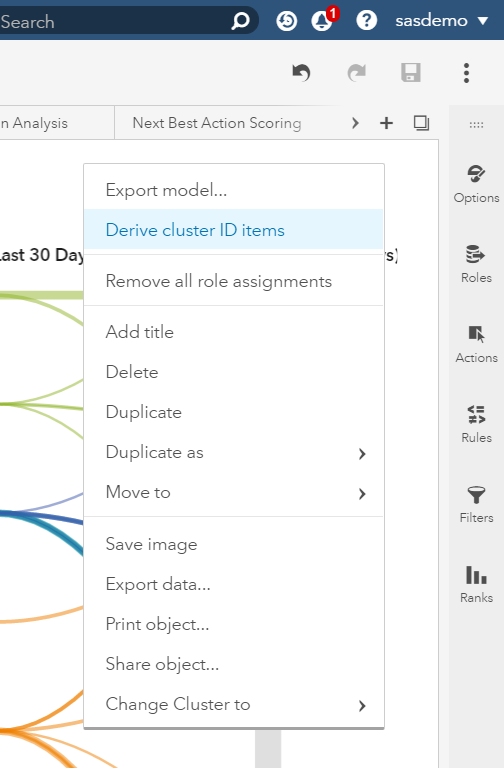
Here is an example of what the tagged data would look like.
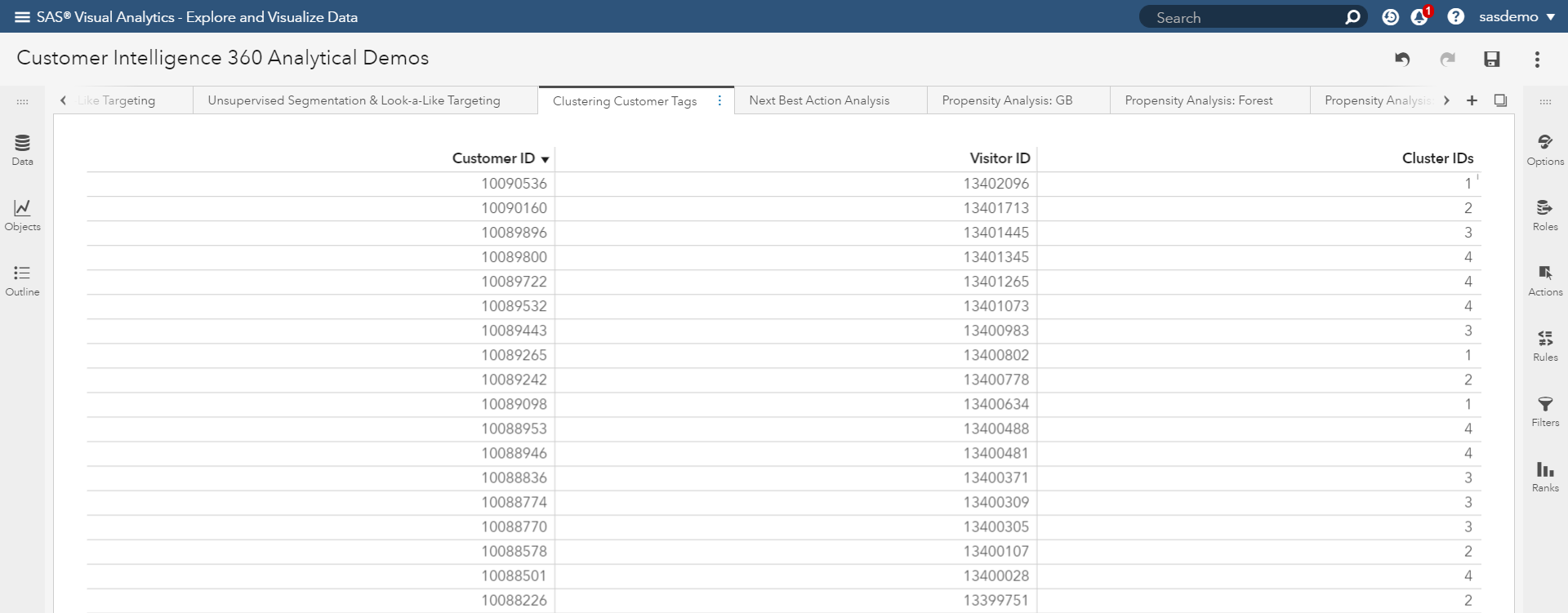
Rest assured, there are different approaches in making analytically scored data available within (and outside) of SAS beyond a table. What options do analysts have in helping their marketing teams?
- Batch or real-time.
- Invoke the clustering scoring engine (SAS, Python or REST) for external APIs through SAS analytic services.
With the clustering analysis tags now available for the marketer, let’s revisit the segmentation map we referenced earlier.
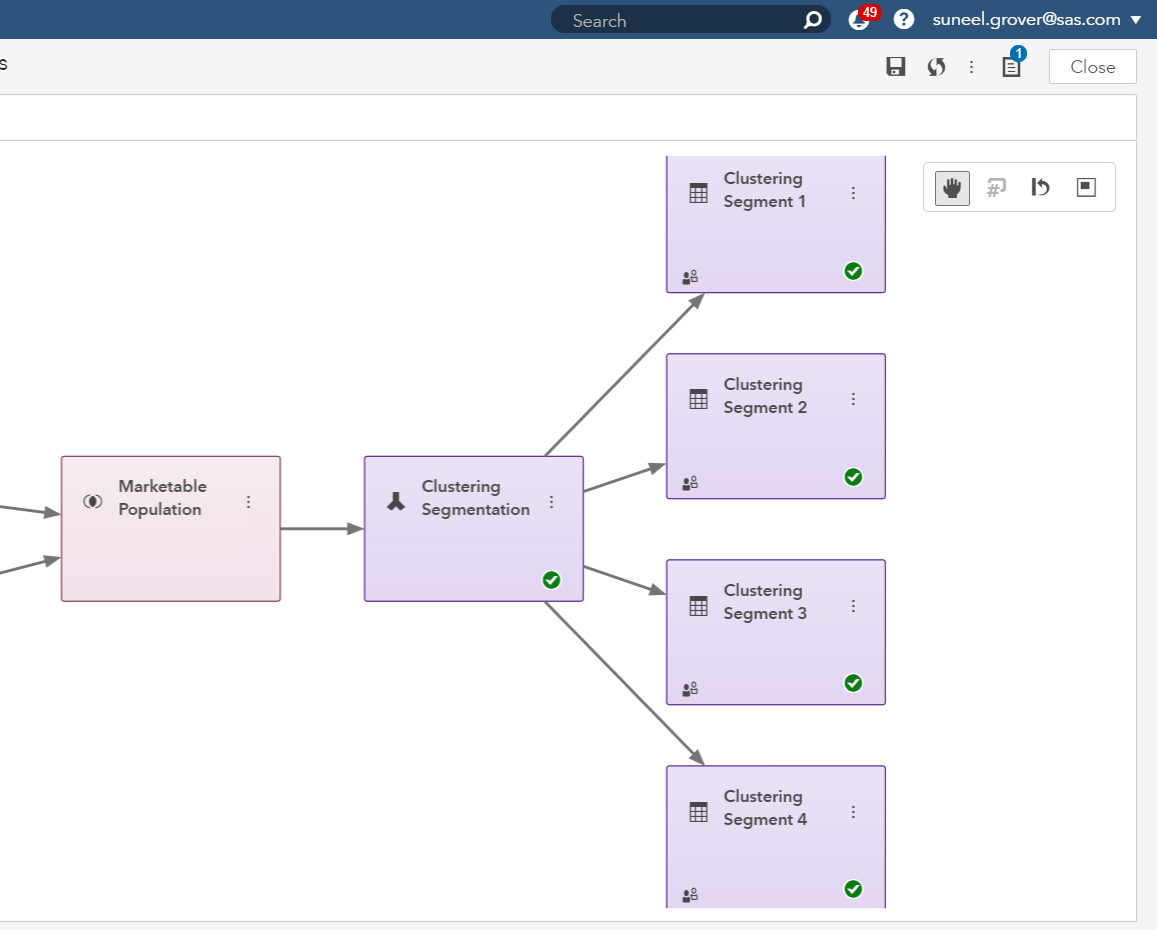
To create the final step of this segmentation map, a split node allows a user to leverage the prescription.
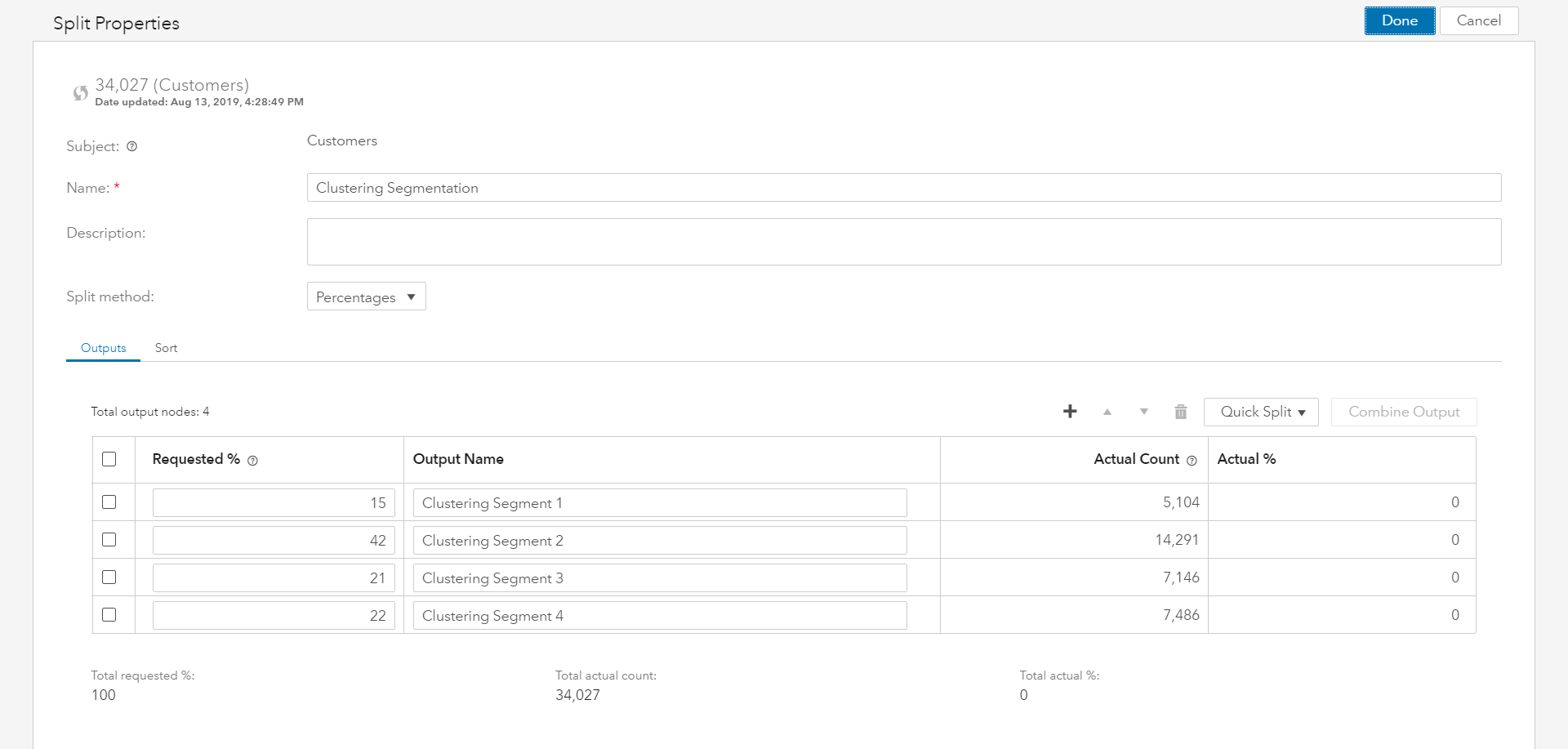
Once the marketer has finished their targeting, users can schedule segments to run once (or on a recurring basis). If your brand is using a third party (for example, a mail house, print shop or email services provider) for execution and delivery, the proper export template can be chosen, and the output files with names, addresses and other personalized information can be sent directly from the environment.
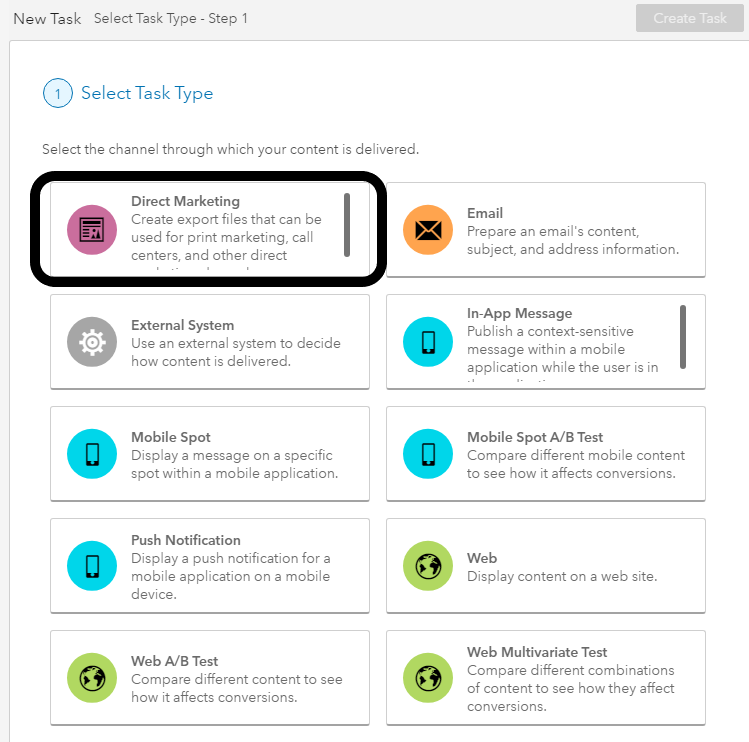
None of your brand’s managed data ever enters the SAS Customer Intelligence 360 cloud. Likewise, contacts and responses can be captured and collected without requiring a pass-through in the cloud.
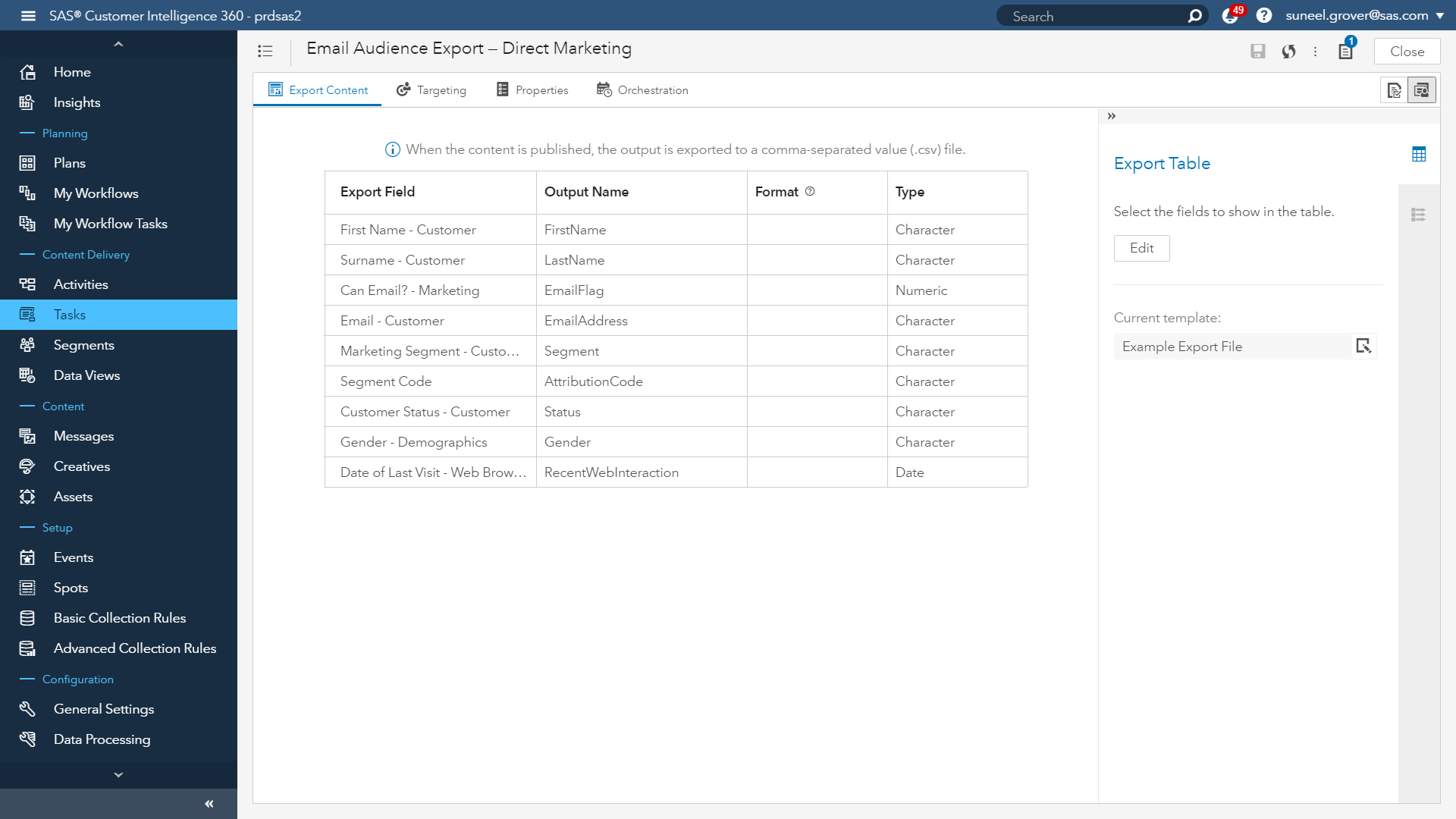
To absorb the clustering-enhanced segmentation into the export, users simply need to add the segment(s) as part of the targeting criteria of the export.

Alternatively, SAS Customer Intelligence 360 is not reliant on third party ESPs, and can support email touch point delivery itself. The benefit is that contact and response tracking is immediately updated in the platform (as opposed to a 24 or 48-hour batch feed that your third party partner sends back), and can benefit downstream personalization when customers interact with your brand across other touch points (web, mobile, call center, etc.).
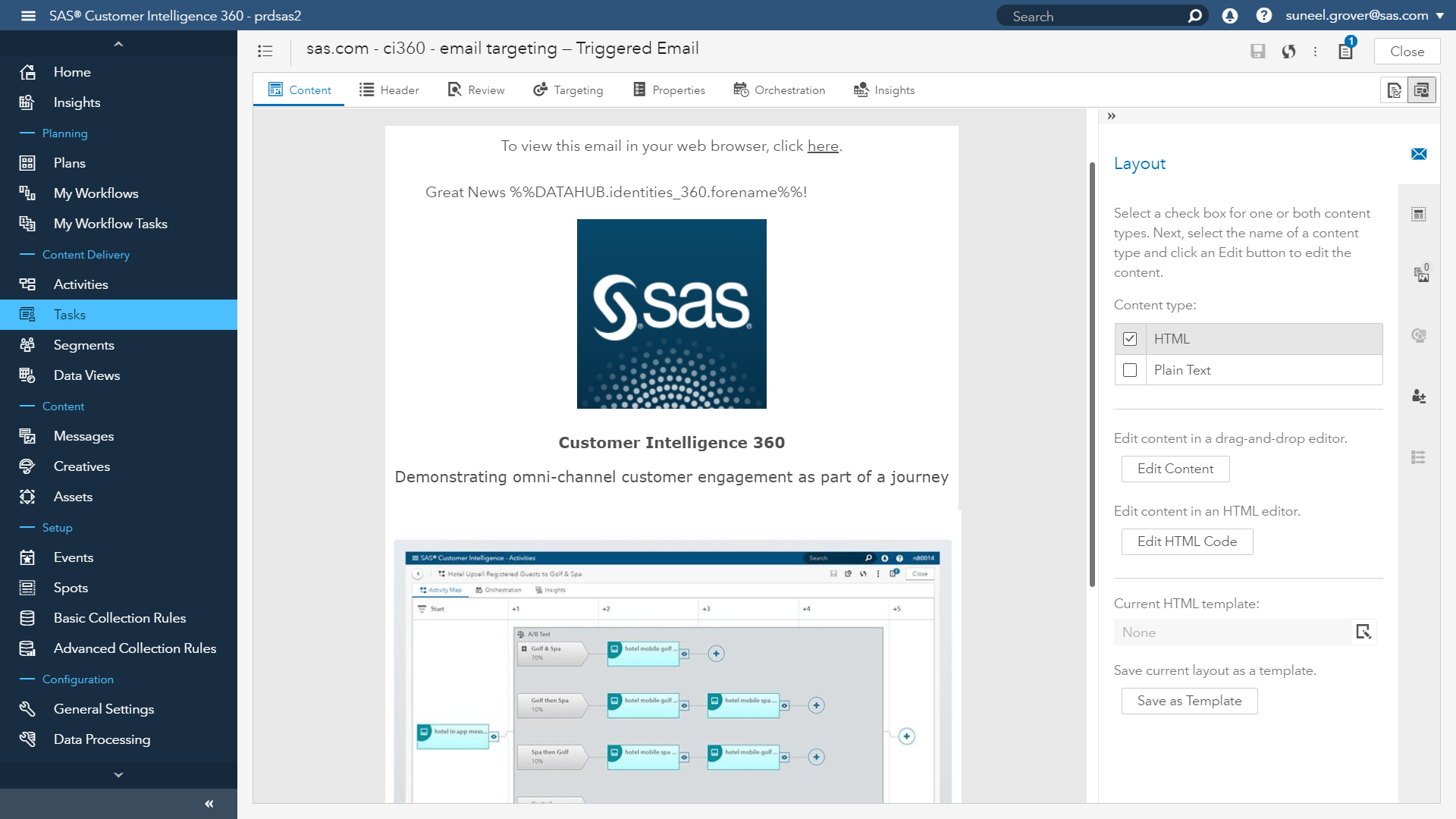
The impact of the hybrid marketing approach with respect to sending email assumes an address must be used by the sender. When SAS Customer Intelligence 360 is used to deliver email, a file that contains addresses, along with any personalization parameters (for example, customer name) required by that email template, is uploaded to the cloud. Once the email is sent, the file is automatically deleted so that no personal data persists.
From a targeting perspective, it’s important to recognize that a defined segment is available across any supported touchpoint (or task) within SAS Customer Intelligence 360. Similar to the direct marketing task example above, the clustering-enhanced segments are available for the email task in a single click.

From a digital marketer’s perspective, the additional customer insight that hybrid marketing provides is invaluable in terms of improving personalization. Let’s discuss this value prop in the context of customer journeys (or activity maps).
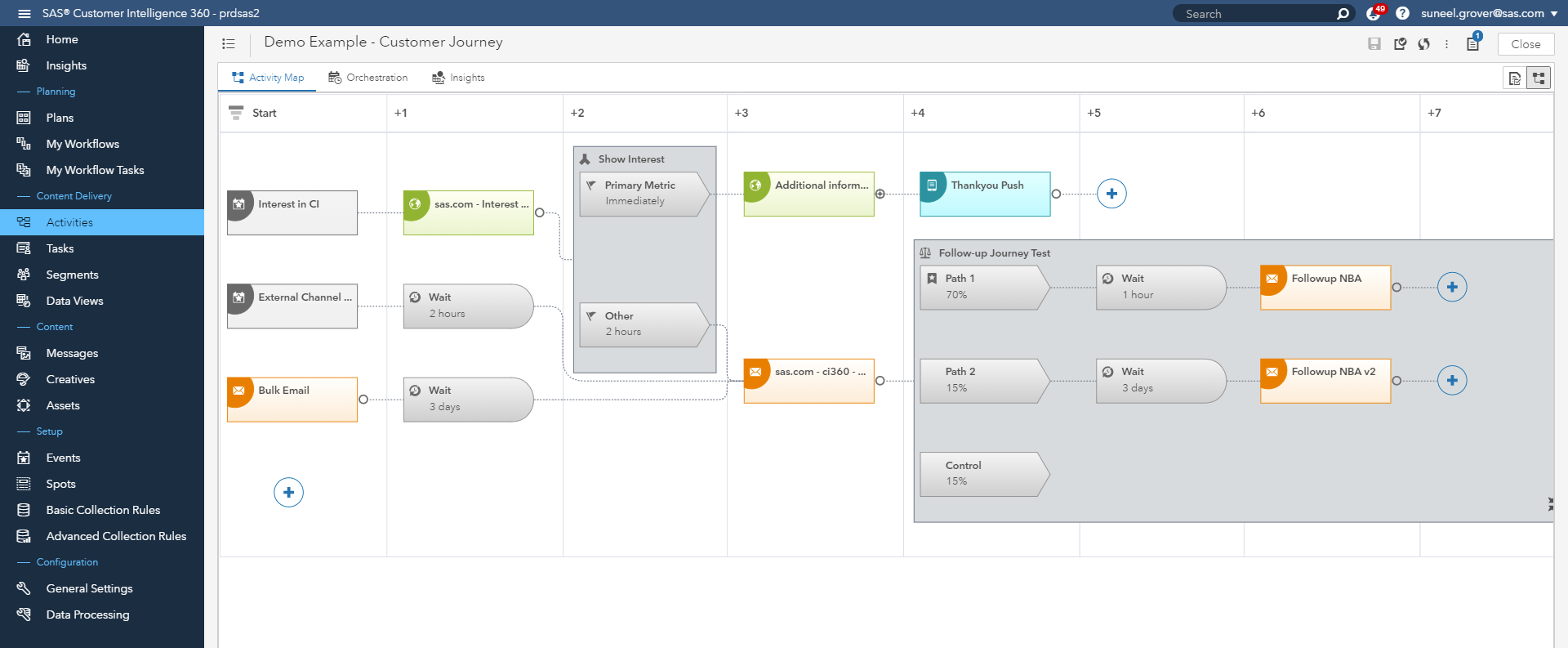
This example depicts a coordinated series of web, mobile and email tasks that are designed to meet the goals of a marketing campaign. An activity map uses tasks and events. An activity map charts the customer journeys between tasks, such as sending a particular message through a particular channel, and conditions, such as the primary goal and evaluation periods.
For example, users might use a web task to present an offer on your website.
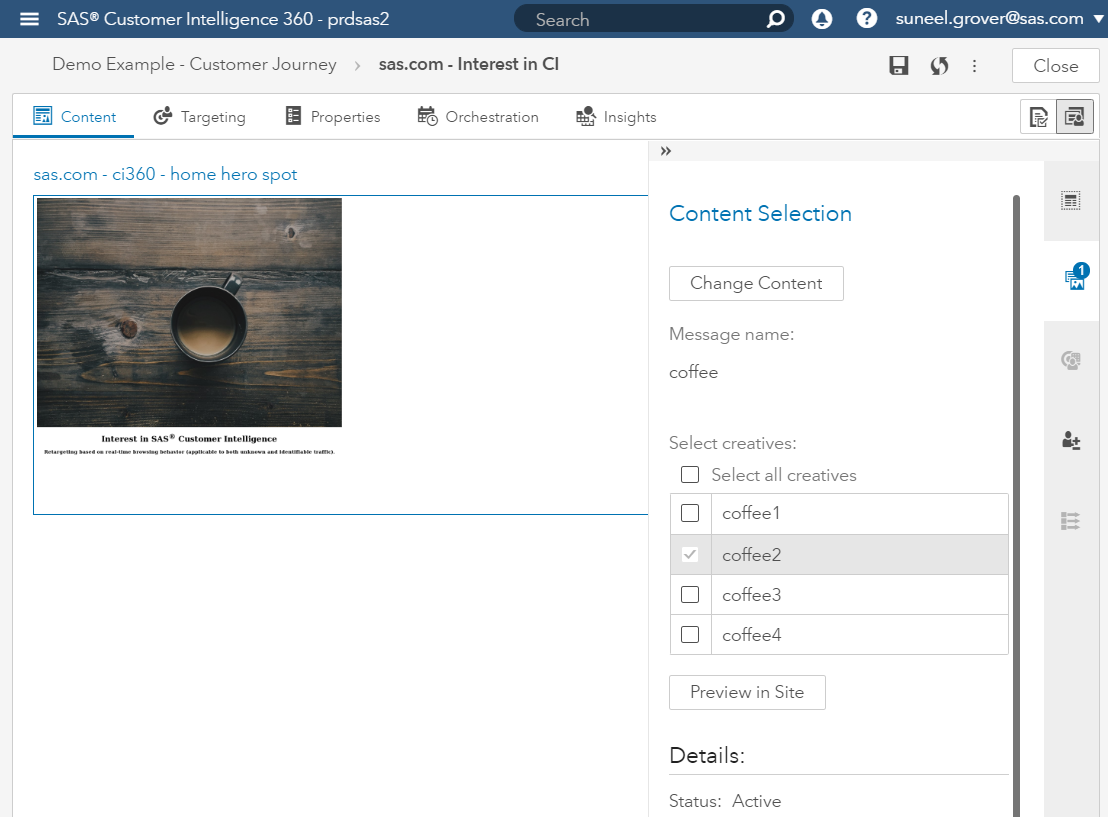
After allocating creative(s) for the interaction, the hybrid marketing value prop surfaces under targeting.
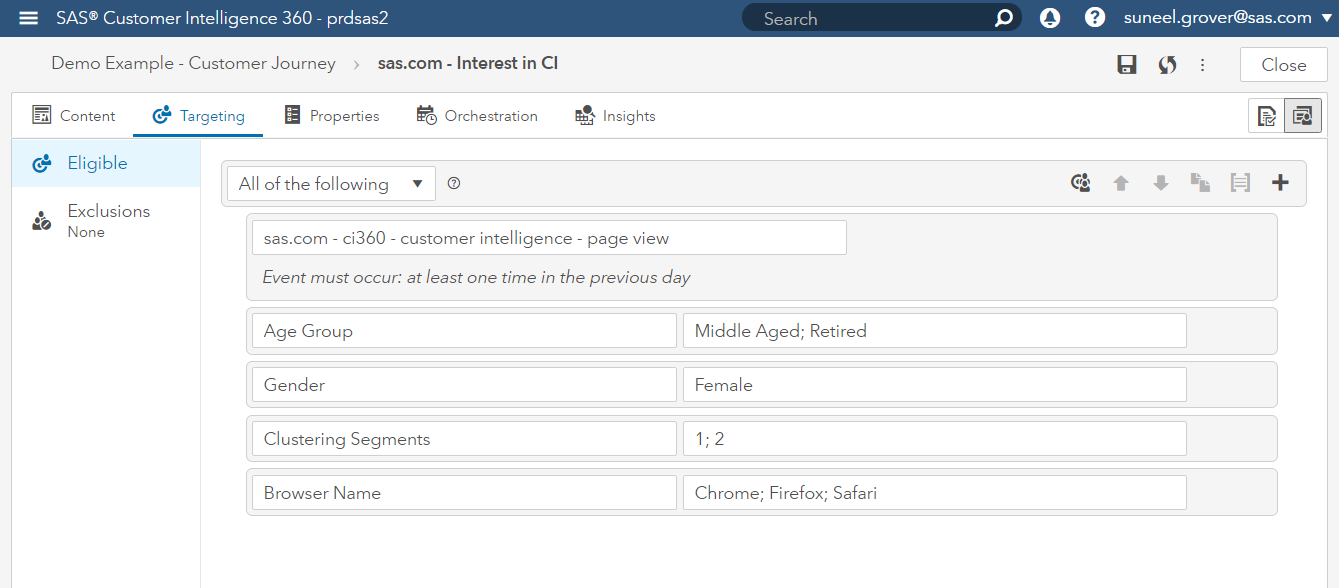
Attainable at the marketer’s fingertips are:
- Demographics from your managed data environment outside of the SAS Customer Intelligence 360 cloud.
- Analytical segmentation scores, web dimensions and behavior stored inside the SAS Customer Intelligence 360 cloud.
Coming back to the customer journey, users can use a mobile or email task to communicate a discount offer to all users who received an impression of the web task offer within the last week, but didn’t meet the macro-conversion goal.
SAS Customer Intelligence 360 isn’t a direct-only or digital-only offering — it’s a hybrid marketing application that allows marketers to create omnichannel scenarios that span traditional direct and digital channels, along with other customer experience Interactions. Against a backdrop of accelerating media and technology complexity, evolving privacy regulations, and increasing consumer expectations, hybrid marketing provides a simple but powerful approach to address today’s martech ecosystem.
To learn more about how the SAS platform can be applied to other marketing and customer-centric use cases, check out additional posts here.


1 Comment
Pingback: SAS Customer Intelligence 360: Hybrid marketing and analytic's last mile [Part 1] - Customer Intelligence Blog